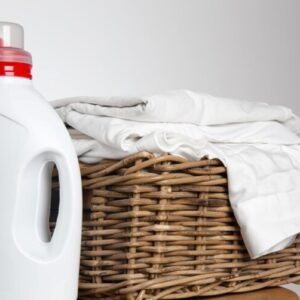
Scientists have discovered that choosing the right plants for your living space can detoxify the air in your home. Moreover, the plants in your home not only look lovely but also provide clean air by detoxifying and inhaling carbon dioxide.
NASA in their studies revealed that air-purifying indoor plants could detoxify airborne toxins from your home. These air-purifying indoor plants actively detoxify dust and germs commonly found in household products, materials, and furniture. Some studies have demonstrated that up to 93% of purification and detoxification of your home require a large number of plants.
Consider plants not as substitutes for purifier devices. The best air-purifying plants for air purification include peace lily, aloe vera, dracaena, spider plant, and Boston fern.
Breath Of Freshness: The Best Air-Purifying Plants For Your Home
Below, we list the best air-purifying plants for detoxifying your home:
- Barberton Daisy
- English Ivy
- Snake Plant or Mother-in-Law’s Tongue
- Chrysanthemum
- Spider Plant
- Aloe Vera
- Broad Lady Palm
1. Barberton Daisy
Barberton daisies actively eliminate toxins like formaldehyde, trichloroethylene, and benzene from your home. Furthermore, with their vibrant colors, these plants not only purify the air but also add a beautiful touch to your living space. Cultivators grow this plant in three colors: red, yellow, and orange.
Keep the plant in your home where plenty of sunlight is emerging and the soil of the plant has proper moisture and well drainage.
2. English Ivy
This is the perfect air-purifying plant for your home and bathroom as it reduces airborne fecal particles. Moreover, some studies have shown that ivy can decrease the level of molds and toxic mushrooms in your home.
Watering English ivy daily in your home with direct sunlight for 4 hours activates its ability to detoxify toxins, transferring love in the process.
3. Snake Plant Or Mother-In-Law’s Tongue
If this plant is in your bedroom, it increases your sleep quality. Additionally, this yellow-tipped plant, also known as mother-in-law’s tongue, releases oxygen at night, thereby increasing the quality of your sleep.
This plant reduces toxins such as formaldehyde, xylene, benzene, and toluene. Please avoid overwatering this plant, as excessive water causes the roots to rot.
4. Chrysanthemum
Chrysanthemum increases the charm and lighten up your kitchen and living room. These plants help to purify toxins including ammonia and benzene. Plastics, detergents, and glue contain these toxins.
This plant makes its energy through sunlight. Therefore, always place this plant where sunlight can effectively bathe it.
5. Spider Plant
For people who are new to growing plants in their homes, spider plants are the perfect choice for them. Spider plants actively reduce toxins like carbon monoxide and xylene, which are commonly used in the printing and rubber industries. These plants are non-toxic to animals and have no side effects on pets.
Moreover, grow a whole family of plants that will be beneficial to your health as well as for pets. This plant requires sunlight to grow fast and perform effectively.
6. Aloe Vera
Aloe vera possesses healing characteristics and serves as a lovely addition to your kitchen. This plant loves sunlight spots to grow faster. It helps in soothing kitchen burns. Furthermore, this plant helps to reduce toxins such as formaldehyde and benzene. Floor finishes and detergents mainly contain these toxins.
This plant loves sunlight as mentioned above and thrives only in sunlight.
7. Broad Lady Palm
Additionally, this plant helps to reduce toxins from the air, such as ammonia, which is a major byproduct of cleaning products. Moreover, growing these plants can be very expensive, so it is advisable to cultivate them when they are young or from seeds.
This plant is humidity-loving and is well-grown indoors or in the bathroom.
Final Thoughts
Furthermore, incorporating air-purifying plants into your home not only adds aesthetic appeal but also enhances indoor air quality. From the vibrant foliage of peace lilies to the resilient spider plant, these green companions offer a natural solution to combat pollutants and toxins, promoting a healthier living environment.
Moreover, remember to consider factors like light and humidity levels when selecting plants and provide proper care to maintain their effectiveness. Embrace the beauty and benefits of these green allies, and breathe easier knowing that nature’s purifiers fill your home, ensuring a refreshing and revitalizing atmosphere for you and your loved ones.
Frequently Asked Questions (FAQ’s)
Q: What plant removes 78% of airborne mold?
A: A fantastic plant for allergy or asthma sufferers, English Ivy removes 78% of airborne mold.
Q: Can indoor plants purify air?
A: There are many reasons why you’d want to have houseplants in your home or office. One benefit that often pops into people’s minds is that plants can help clean the indoor air. However, is this true? An extensive review of decades of research says: No.
Q: Which plant gives oxygen 24 hours?
A: The peepal tree is a tree that gives oxygen for 24 hours. Additionally, it is also known as the bo or bodhi tree and belongs to the same genus as neem trees. Furthermore, the peepal grows up to 15 meters tall and has grey bark on its branches. Originating from India, Myanmar, and Sri Lanka, it has spread throughout Southeast Asia.






